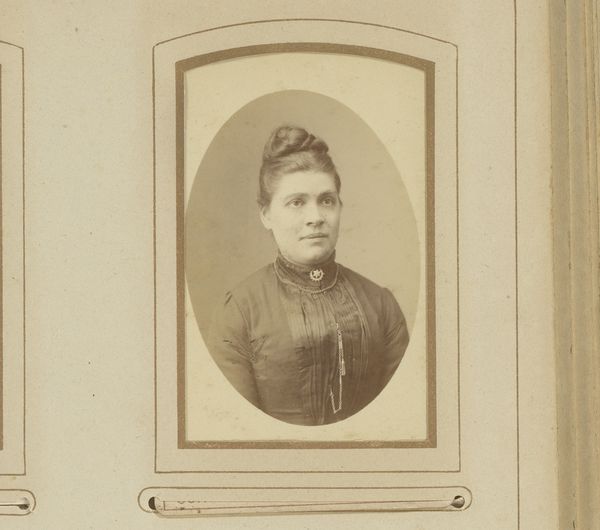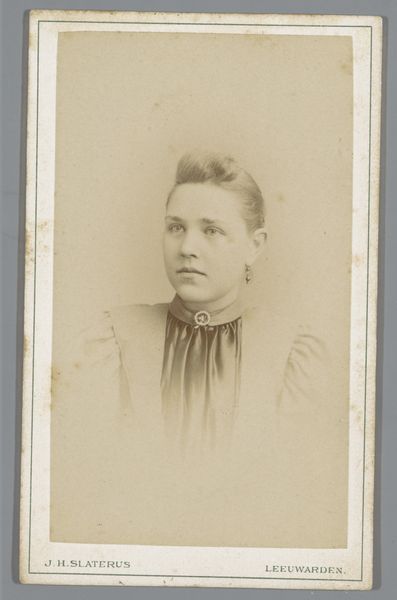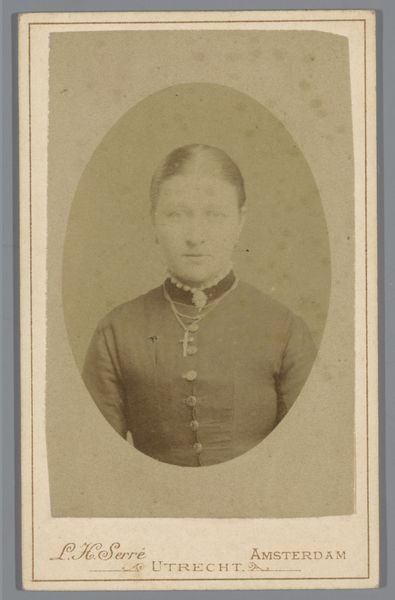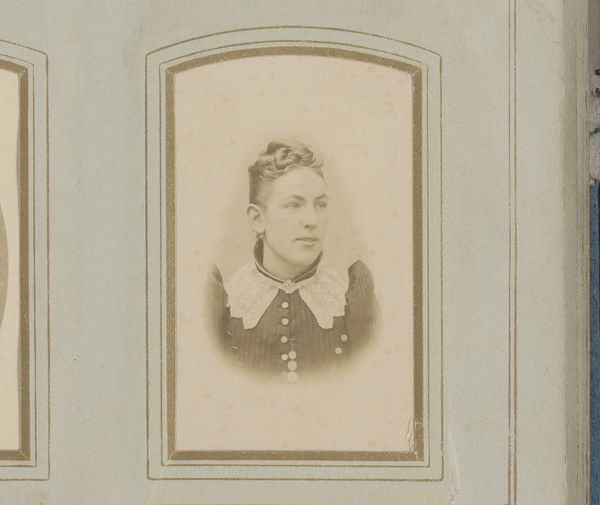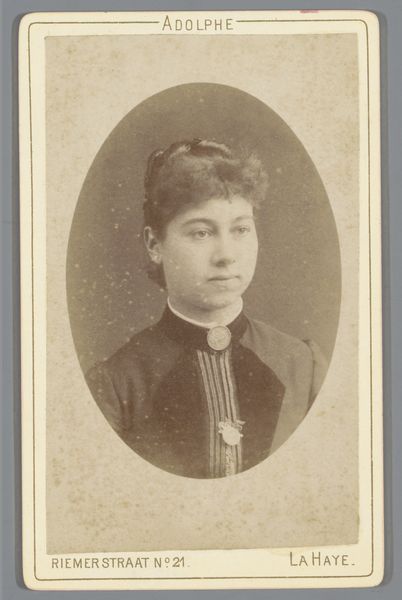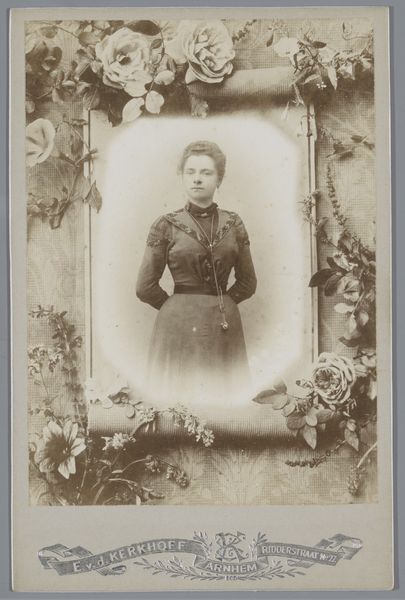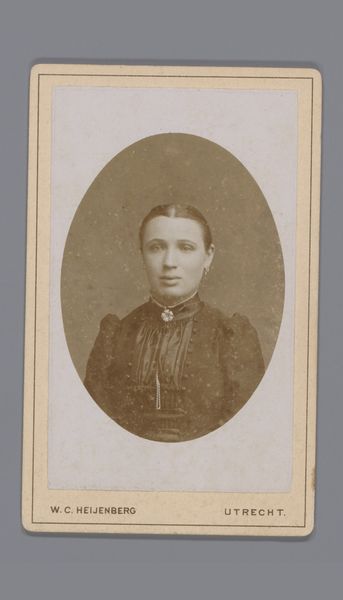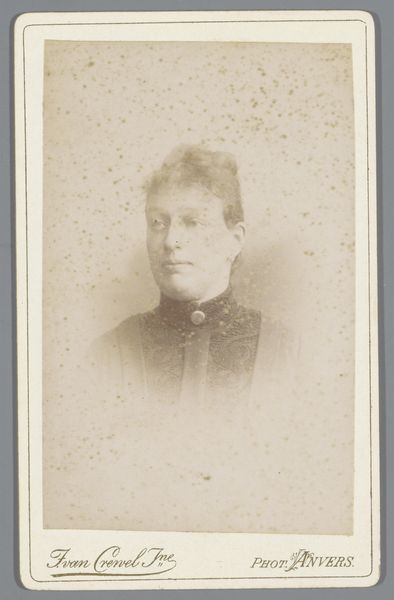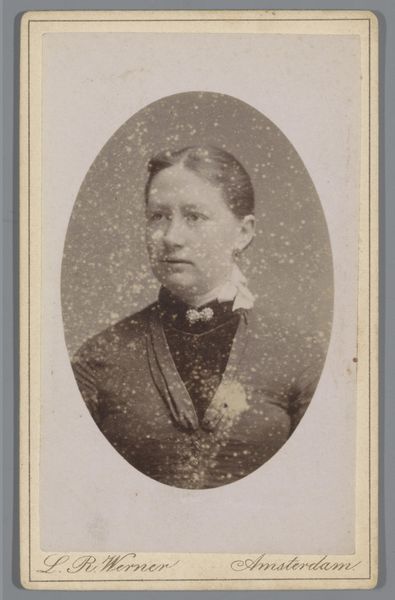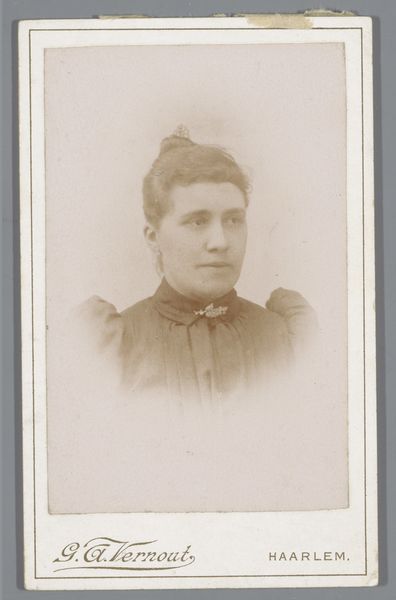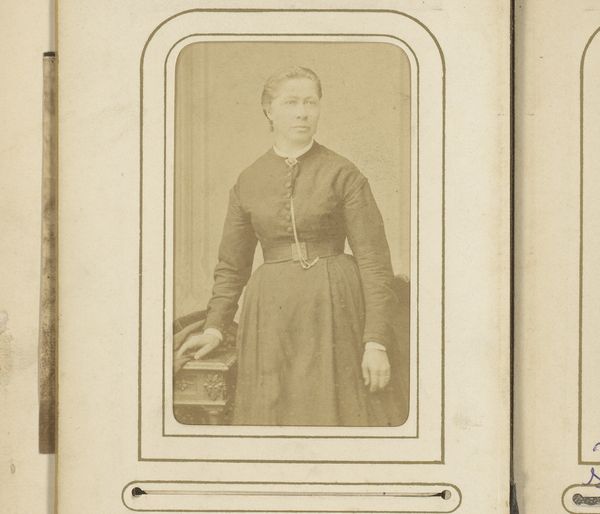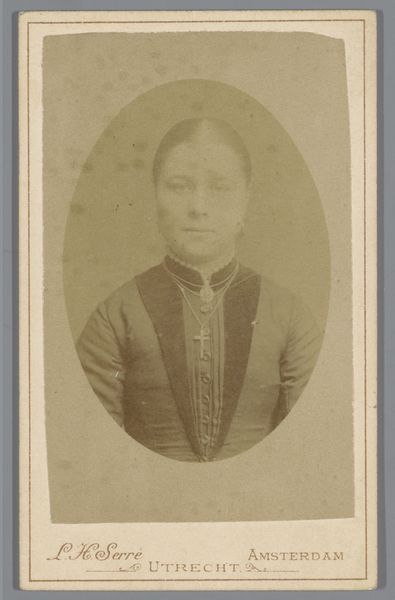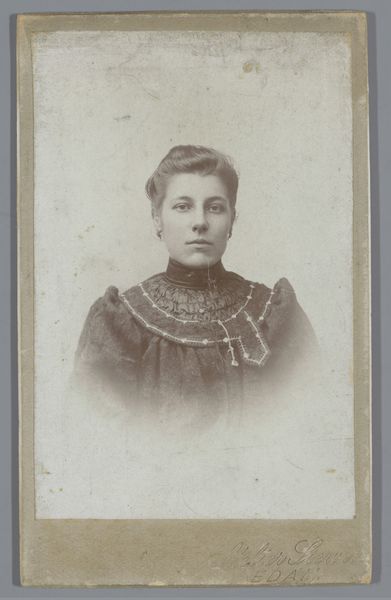
photography
#
portrait
#
photography
#
realism
Dimensions: height 102 mm, width 64 mm
Copyright: Rijks Museum: Open Domain
Curator: This is "Portret van Neletta Jonker van der Linden" by Albert Greiner, dating to between 1874 and 1897. It’s a striking portrait photograph currently housed here at the Rijksmuseum. Editor: Immediately, I’m struck by the oval frame within the photograph itself—so ornate and contrasting sharply with Neletta’s simple, almost austere, dress. There's a certain melancholy conveyed in the soft sepia tones, no? Curator: Absolutely. The photographer, Albert Greiner, was clearly playing with contrasting elements. Let’s consider that embedded oval; a framing within a framing draws attention, isolating the subject in a kind of idealized space—but within the conventions of realism, you understand. Editor: How did studios function for the middling sorts getting pictures in that moment? Who might Neletta have been, and who might pay for her portrait? Curator: Photographic studios flourished from the mid-19th century onward, and they democratized portraiture. A studio like Greiner's in Amsterdam made portraits accessible to a broader range of the middle class and those hoping to climb its social ladder. This image acts almost like a business card, solidifying their standing. Editor: Thinking about that context… what visual signals are most significant here, can you trace how the lighting might influence its reception as something 'proper' and professional? Curator: Observe the careful attention to light and shadow, which adds depth and contour to Neletta’s face, conforming with contemporary standards of respectable and grounded femininity. Editor: And note, too, the minimal ornamentation. Neletta's gaze and posture contribute to the effect. While composed and proper, her lack of adornment draws attention to her features themselves. What is the 'Neletta Effect' and how do photographers market this 'look' and style? Curator: I see your point. We might see this effect in the strategic choices about simplicity contributing to an image of sober Protestant virtues. It reminds me of debates about whether photography represented ‘art’. Is Neletta portrayed here as object, ideal, or collaborator? It’s impossible to determine definitively but interesting nonetheless. Editor: Food for thought, absolutely. Ultimately, analyzing the photograph's structure and context, offers intriguing entry points into our interpretation of historical imagery and Dutch culture. Curator: Precisely, considering how it both adheres to, and perhaps slightly pushes against, some rigid social and artistic conventions provides a unique opportunity to question their visual power.
Comments
No comments
Be the first to comment and join the conversation on the ultimate creative platform.
